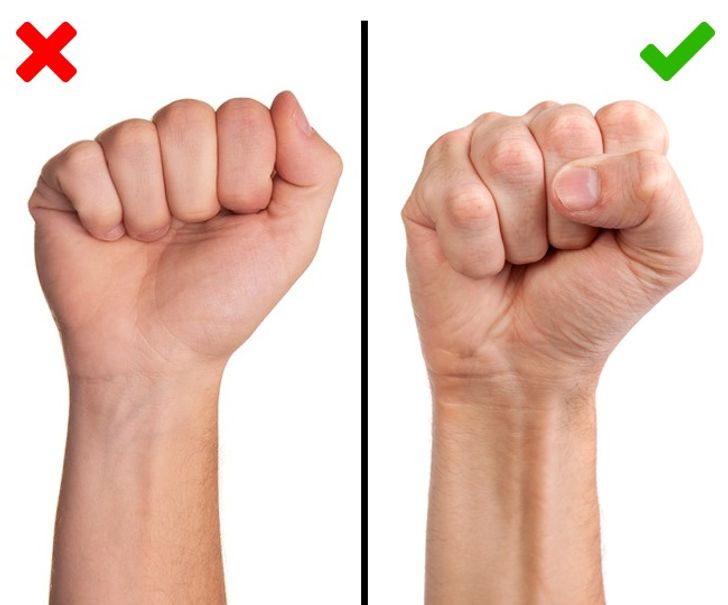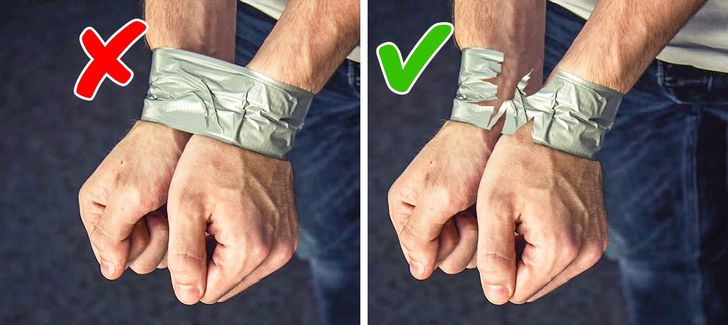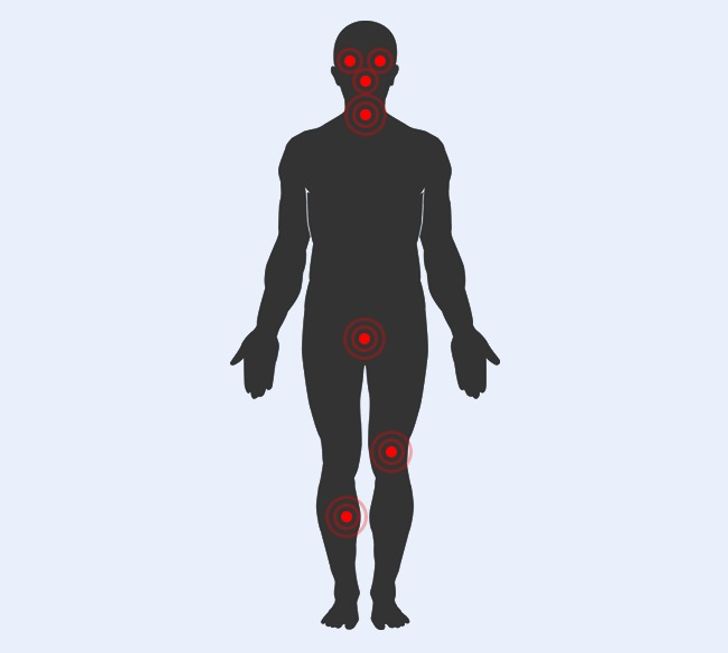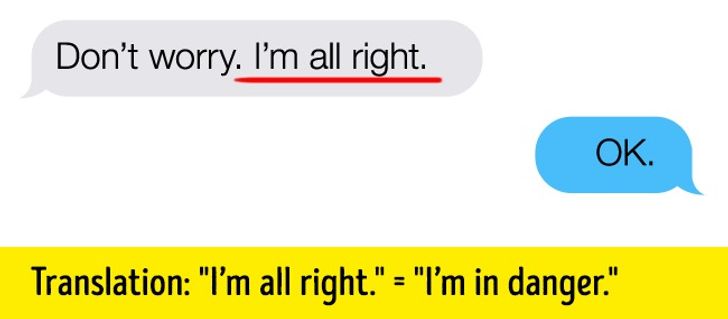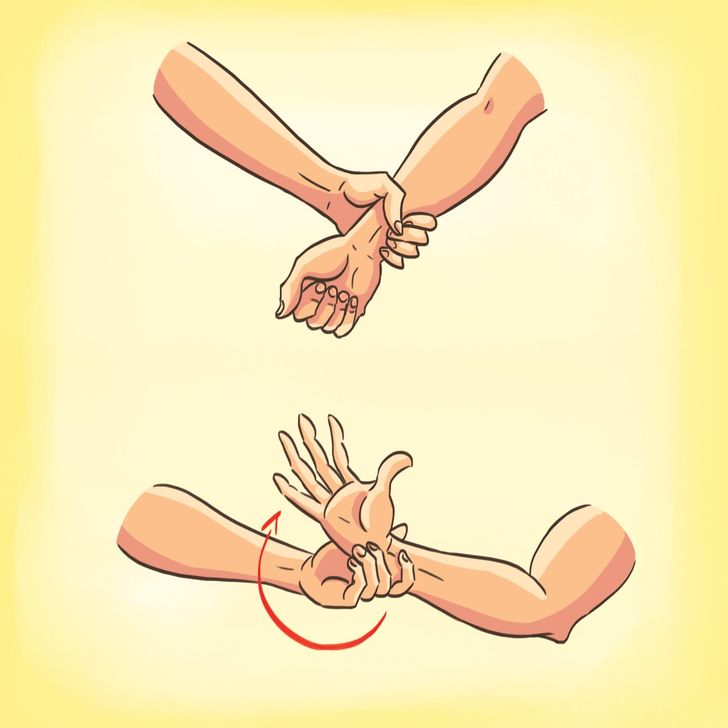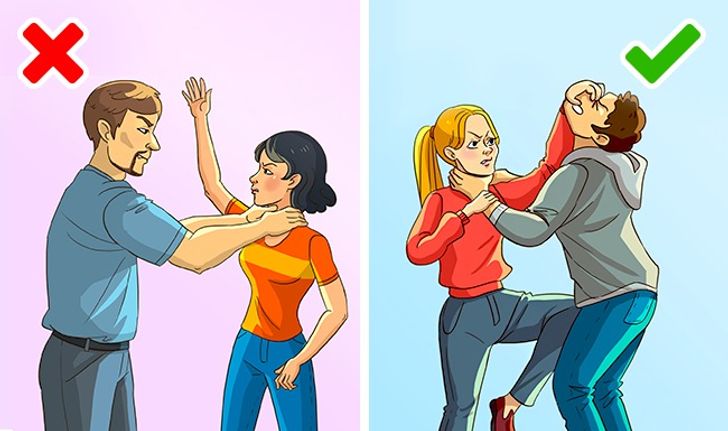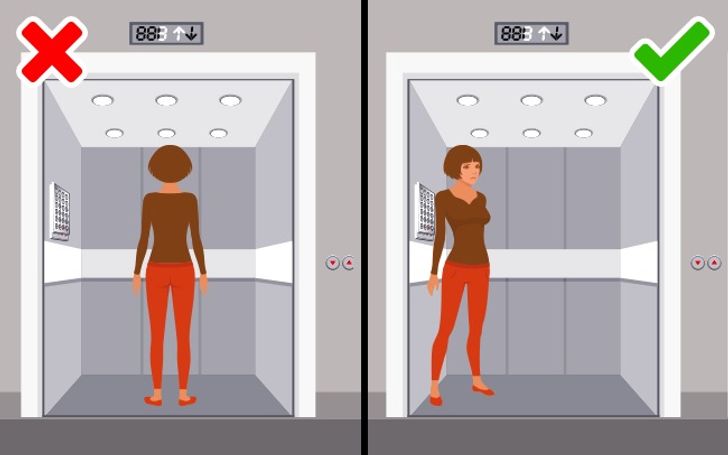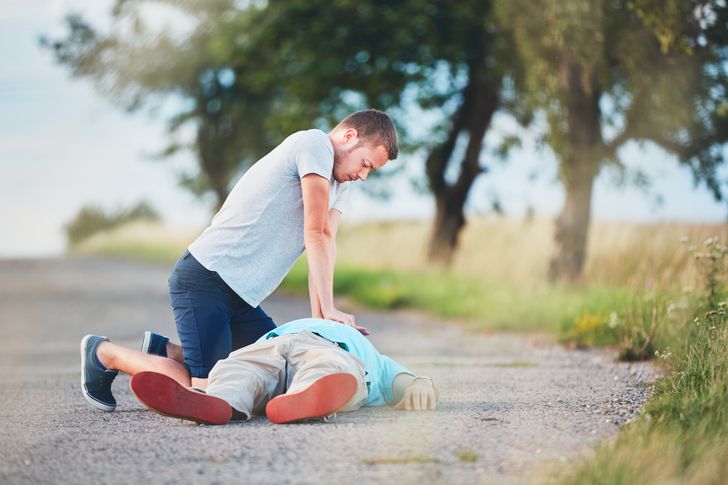Bright Side is sure that it’s better to be prepared for all twists of fate. We have gathered 14 helpful tips that we hope you’ll never have to use in real life.
1. Clench your hands correctly.
The debate about which is more effective in a fight – a fist or a flat hand – is an old one. Most often, however, your hand automatically clenches into a fist before a blow. The important thing here is to do it without injuring your fingers. Don’t expose your thumb, but don’t hide it under your fingers either: this can lead to fracturing.
Don’t neglect using the flat of your hand in a fight: this type of blow will come as more of a surprise.
2. How to break free of cord:
The main thing you need to do is leave some room for air. If your hands are being tied, keep them clenched in fists. If your body is being tied, breathe in so that your diaphragm expands. The more room there is left between you and your ties, the more chances you have to escape.
3. How to break free of duct tape:
If your hands are bound by duct tape, you can actually tear it apart rather simply: raise your hands above your head, and then thrust them down with a lot of force. This method can be applied even if your hands are bound from behind.
4. Remember the vulnerable areas.
You are likely to be less physically strong than your attacker, so you have to rely on the element of surprise. Remember to strike a blow as hard and as swiftly as you can. If you think or aim for too long, your adversary will figure out your intentions and get even angrier.
5. Use security apps.
Put modern methods to use: applications such as Family Locator, bSafe, and others will allow you to track the movements of your friends and relatives or send out a distress signal if necessary.
6. Invent a code word.
In childhood, many of us invent codes, new words, or even languages. This seemingly impractical hobby could save your life. If you don’t have a chance to talk or text, an encrypted SOS will tell of your predicament. And if you take your rebus-composing even further, your rescuers could learn the direction where you’ve been taken or even the exact place where you were left.
7. Use the materials on hand.
Use any object that could help. Your purse can serve as a shield from a knife assault (just don’t press it too close to your body); your scarf can be thrown in an attacker’s face to buy you a couple of seconds. Umbrellas, bags, and even small change in your pocket can be of help. Keys are one of the best tools – just don’t waste time trying to use them as a knuckleduster.
8. Keep your pepper spray in the right place.
There’s no point in keeping a pepper spray in your bag if there is a bottomless black hole inside. Assaults usually occur unexpectedly, and you have to snatch out your defensive tool as quickly as possible. Keep it in your pocket so you can promptly use it and run away.
9. If you’ve been grabbed by the hand:
You can escape from a hand grip by using the "rule of thumb": rotate your hand toward the attacker’s thumb. Remember that you should do it in a quick, sharp jerk. If the assailant realizes your plan, he’ll squeeze your hand with all his strength. In this case, use your feet: hit him in the groin and knees, and step on his feet with as much force as you can.
10. If you’ve been grabbed by the hair:
One of the most common ways of assaulting is capturing the victim’s hair. Not only is this technique painful, but it also provides almost total control over the victim’s body. First of all, grab the attacker’s hand with both of your hands: this will let you regain control. Then it’s time to make use of your feet again. As soon as you feel that the attacker’s hand has loosened its grip, let go of it and run
11. If you’ve been grabbed by the neck:
Hit the attacker in the groin, or poke his eyes with your fingers: pain will make him loosen his grasp.
12. In an elevator:
Everyone knows that you shouldn’t go into an elevator with strangers and that you’d better leave if someone suspicious enters after you. Make it a habit to stand with your back to the part of the wall where the buttons are. It’s better to press a button for your fellow traveler than to let him stop the elevator and get stuck between floors with him.
13. In a car:
As in the case of the elevator, it’s possible to prevent an assault. In addition to the standard rule of not getting into a car with strangers, you can pointedly tell someone on the phone (or at least write down) the car’s number, color, and destination for your driver to see and hear. If an assault still happens, aim for vulnerable areas: groin, nose, and eyes.
14. Learn to administer first aid.
If you have ignored them until now, here are the essential rules of providing first aid. There may be a situation where you or someone else is injured, and a hospital might not be immediately available. In this case, your first aid measures could save a life.
For more digital Updates: Click here
Here's our website , You can visit & Post a Comment below in the Comment Section, If you want any other informaion regarding the above Content .We'll try our best to cover all your Points
For more digital Updates: Click here
